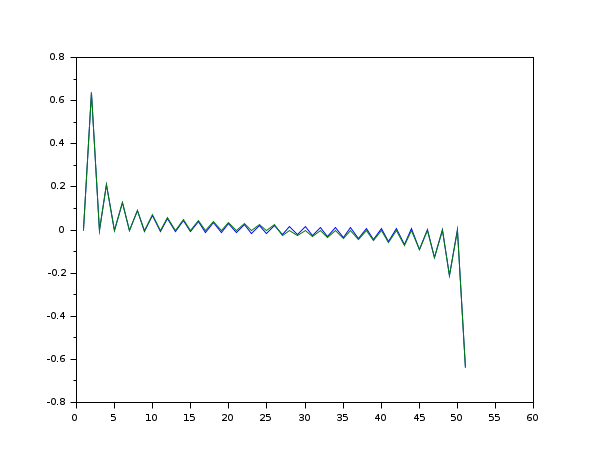Scilab 6.0.0
- Справка Scilab
- Signal Processing
- Filters
- analpf
- buttmag
- casc
- cheb1mag
- cheb2mag
- convol
- ell1mag
- eqfir
- eqiir
- faurre
- ffilt
- filt_sinc
- filter
- find_freq
- frmag
- fsfirlin
- group
- hilbert
- iir
- iirgroup
- iirlp
- kalm
- lev
- levin
- lindquist
- remez
- remezb
- srfaur
- srkf
- sskf
- syredi
- system
- trans
- wfir
- wfir_gui
- wiener
- wigner
- window
- yulewalk
- zpbutt
- zpch1
- zpch2
- zpell
Справка Scilab >> Signal Processing > Filters > hilbert
hilbert
Discrete-time analytic signal computation of a real signal using Hilbert transform
Syntax
x=hilbert(xr)
Arguments
- xr
real vector : the real signal samples
- x
Complex vector: the discrete-time analytic signal.
Description
Returns theanalytic signal, from a real data sequence.
The analytic signal x= xr + i*xi has a real part, xr, which
is the original data, and an imaginary part, xi, which contains
the Hilbert transform. The imaginary part is a version of the
original real sequence with a 90° phase shift.
References
http://ieeexplore.ieee.org/iel5/78/16975/00782222.pdf?arnumber=782222
Marple, S.L., "Computing the discrete-time analytic signal via FFT," IEEE Transactions on Signal Processing, Vol. 47, No.9 (September 1999), pp.2600-2603

Comments
Add a comment:
Please login to comment this page.